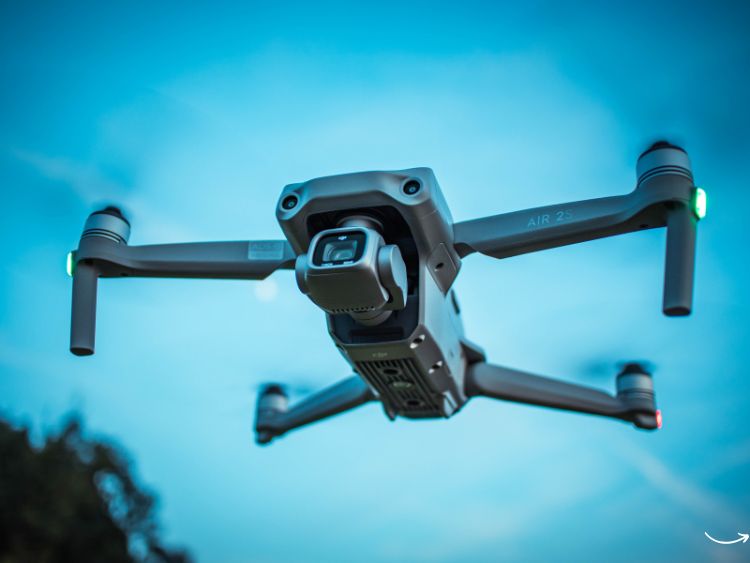So, you’re thinking about flying a drone in Thailand? That’s awesome! But before you take to the skies, there’s something you need to consider: drone insurance. In this guide, we’ll dive into everything you need to know about drone insurance in Thailand. From the basics of why you need it to the nitty-gritty details of what it covers, we’ve got you covered. Let’s get started!
Why Do You Need Drone Insurance in Thailand?
Flying a drone is an exhilarating experience, but it comes with its own set of risks. Whether you’re a hobbyist capturing stunning landscapes or a professional using drones for commercial purposes, accidents can happen. Here’s why drone insurance is crucial in Thailand:
- Legal Requirements: In Thailand, drone operators must adhere to specific regulations. If your drone weighs more than 2 kg, you must register it with the Civil Aviation Authority of Thailand (CAAT). Part of this registration process involves having liability insurance.
- Protection Against Accidents: Drones can malfunction or be difficult to control, leading to potential accidents. Drone insurance provides coverage for damages caused by your drone, whether to property or people.
- Coverage for Equipment Damage: Drones are expensive, and repairs can be costly. Insurance can help cover the costs of repairing or replacing your drone if it gets damaged during flight.
- Peace of Mind: Knowing that you’re covered in case of an accident allows you to focus on capturing those breathtaking aerial shots without worrying about potential liabilities.
Types of Drone Insurance in Thailand
When it comes to drone insurance, there are several options available in Thailand. Let’s break down the main types:
1. Liability Insurance
This is the most basic form of drone insurance and is often required by law. Liability insurance covers damages or injuries caused to third parties by your drone. It’s essential for protecting yourself from legal claims and financial losses resulting from accidents.
2. Hull Insurance
Hull insurance covers physical damage to your drone. Whether your drone crashes into a tree or suffers from a technical malfunction, this insurance will help cover the repair or replacement costs. It’s particularly useful for commercial drone operators who rely on their equipment for business.
3. Personal Injury Insurance
This type of insurance provides coverage for injuries sustained by the drone operator or other individuals involved in the drone operation. It can include medical expenses and compensation for lost income due to injury.
4. Commercial Drone Insurance
If you use your drone for commercial purposes, such as aerial photography, surveying, or delivery services, commercial drone insurance is essential. It typically includes liability, hull, and personal injury coverage, tailored to the needs of businesses.
How to Choose the Right Drone Insurance in Thailand
Selecting the right drone insurance can be a daunting task, but it doesn’t have to be. Here are some tips to help you make an informed decision:
1. Assess Your Needs
Consider how you use your drone. Are you a hobbyist or a professional? Do you fly in populated areas or remote locations? Understanding your needs will help you determine the level of coverage required.
2. Compare Policies
Not all insurance policies are created equal. Take the time to compare different insurance providers and their offerings. Look for comprehensive coverage that includes liability, hull, and personal injury insurance.
3. Check Exclusions
Every insurance policy has exclusions, so read the fine print. Common exclusions include flying in restricted areas, using the drone for illegal activities, and not adhering to local regulations. Make sure you’re aware of what isn’t covered to avoid surprises later.
4. Look for Customization Options
Some insurance providers offer customizable policies that allow you to add or remove coverage based on your specific needs. This flexibility can be beneficial, especially for commercial drone operators with unique requirements.
5. Consider the Cost
While cost shouldn’t be the only factor in your decision, it’s important to find a policy that fits your budget. Compare premiums and ensure that the coverage provided justifies the cost.
Common Claims in Drone Insurance
Understanding the common types of claims can help you better prepare and avoid potential issues. Here are some typical claims associated with drone insurance:
- Crash Damage: Accidental crashes are the most common claims. These can occur due to pilot error, technical malfunctions, or environmental factors like strong winds.
- Third-Party Liability: Claims involving damage to third-party property or injuries to individuals caused by a drone are frequent. This includes incidents like a drone crashing into a parked car or injuring a bystander.
- Theft and Loss: Drones are valuable pieces of equipment and can be targets for theft. Insurance can cover the loss or theft of your drone, provided it wasn’t due to negligence.
- Weather-Related Damage: Adverse weather conditions can lead to drone damage. Insurance can cover incidents where your drone is damaged due to unexpected weather changes.
FAQs about Drone Insurance in Thailand
1. Is drone insurance mandatory in Thailand?
Yes, drone insurance is mandatory in Thailand if your drone weighs more than 2 kg. You need to have liability insurance as part of the registration process with the Civil Aviation Authority of Thailand (CAAT).
2. Can I fly my drone without insurance if it weighs less than 2 kg?
While it’s not legally required to have insurance for drones weighing less than 2 kg, it’s highly recommended. Insurance provides protection against accidents and financial losses, giving you peace of mind.
3. What should I do if my drone is involved in an accident?
If your drone is involved in an accident, immediately assess the situation and ensure everyone’s safety. Document the incident with photos and videos, and report it to your insurance provider as soon as possible. Follow their instructions for filing a claim.
4. Can I get insurance for a drone I built myself?
Yes, you can get insurance for a custom-built drone. However, the process may be more complex, and you might need to provide detailed information about the drone’s specifications and construction.
5. Does drone insurance cover international flights?
This depends on your insurance policy. Some policies offer international coverage, while others do not. If you plan to fly your drone abroad, check with your insurance provider and consider purchasing additional coverage if necessary.
Conclusion
Drone insurance in Thailand is not just a legal requirement but a smart investment. It protects you from potential liabilities and financial losses, ensuring you can enjoy your drone flying experience without worry. Whether you’re a hobbyist or a professional, having the right insurance coverage is crucial.
By understanding the types of insurance available, assessing your needs, and comparing policies, you can find the perfect insurance plan for your drone. Remember to read the fine print and be aware of exclusions to avoid any surprises down the line.
So, before you take to the skies in Thailand, make sure you’re covered. Safe flying!
Authoritative Links
- Civil Aviation Authority of Thailand (CAAT) – https://www.caat.or.th
- Thai Department of Civil Aviation – https://www.aviation.go.th
- Popular Drone Insurance Providers in Thailand – https://www.thaidroneinsurance.com
- Drone Regulations in Thailand – https://www.droneregulations.info/Thailand
Feel free to reach out with any questions or additional information needs. Safe and happy flying with your drone in Thailand!



